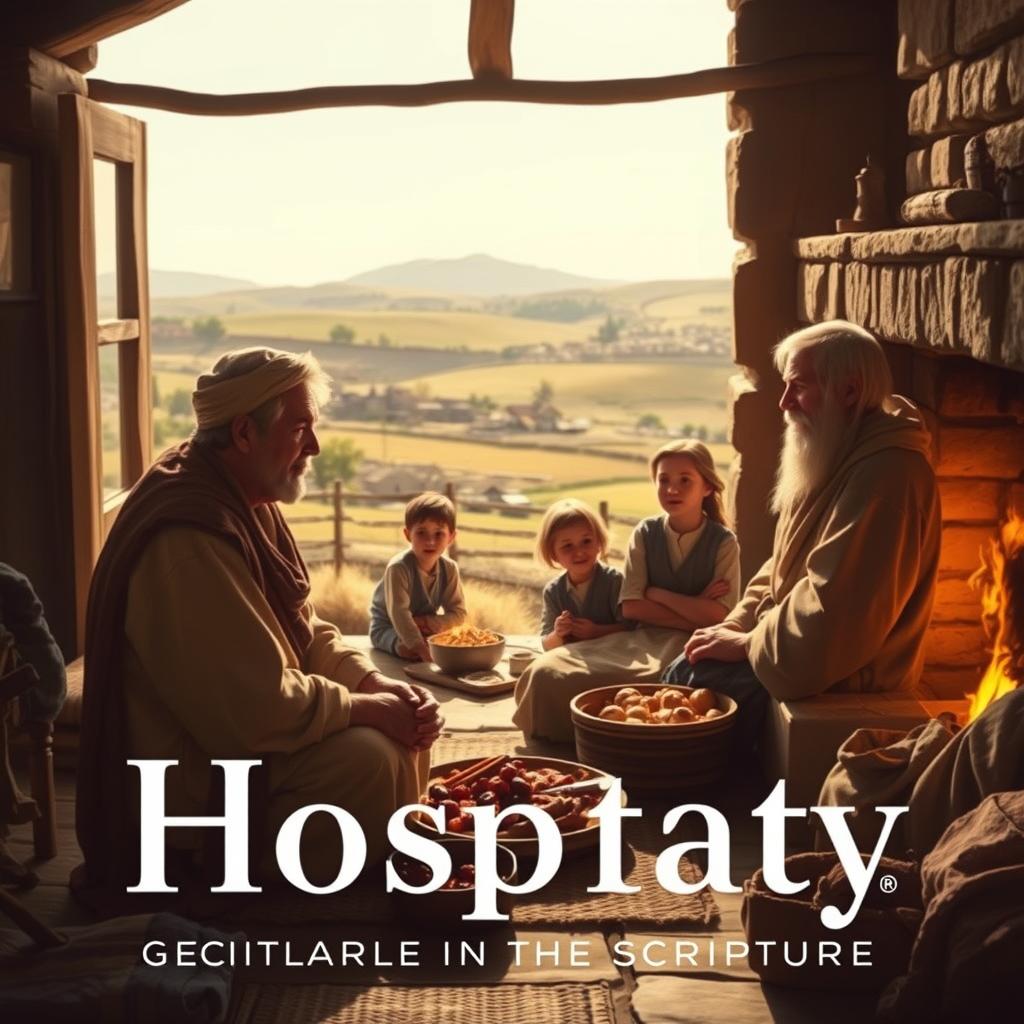The Catholic Church celebrates the Sixteenth Sunday in Ordinary Time, C Cycle. This day focuses on hospitality and contemplation. It’s a time to think about our values and actions.
The readings for this day are rich and meaningful. They include Genesis 18:1-10a, Psalm 15:2-3, 3-4, 5, Colossians 1:24-28, and Luke 10:38-42. These texts guide us deeper into our faith.
The story of Abraham’s hospitality in Genesis and Mary’s contemplation in Luke’s Gospel are key. They show us the importance of service and devotion.
Reflecting on these readings, we’re asked to look at our lives. How do we show hospitality and contemplation every day?
The Liturgical Context of the Sixteenth Sunday in Ordinary Time
Understanding the Sixteenth Sunday in Ordinary Time, C Cycle, is key. It’s a special day in the Catholic Church’s year. This Sunday is part of the liturgical calendar.
Position in the Church Calendar
The Sixteenth Sunday in Ordinary Time is in Ordinary Time. This time focuses on Jesus Christ’s life and teachings. Ordinary Time happens twice a year, after Christmas and after Pentecost.
Significance in Ordinary Time
In Ordinary Time, the Church highlights Jesus’ ministry and teachings. It’s a time to dive deep into the Gospel’s meaning for our lives.
Themes of the C Cycle Readings
The C Cycle readings bring special themes. These include hospitality, service, and contemplation. Here’s a quick look at these themes:
| Reading | Theme |
|---|---|
| First Reading: Genesis 18:1-10a | Abraham’s Hospitality |
| Gospel Reading: Luke 10:38-42 | Martha and Mary |
Overview of the Day’s Readings and Their Interconnections
The Sixteenth Sunday in Ordinary Time, C Cycle, brings together rich themes. These include Genesis 18:1-10a, Psalm 15:2-3,3-4,5, Colossians 1:24-28, and Luke 10:38-42. They show the importance of hospitality, service, and contemplation in Christian life.
Common Themes Across the Readings
The readings highlight the value of hospitality. In Genesis 18:1-10a, Abraham shows faith by welcoming strangers. This is mirrored in Luke 10:38-42, where Martha welcomes Jesus, showing the role of hospitality in Christianity.
The Responsorial Psalm, Psalm 15:2-3,3-4,5, talks about being righteous. It mentions qualities like integrity and truth, which are key to true hospitality.

Theological Significance in the Liturgical Year
The readings hold deep theological meaning in the liturgical year. They make us think about our relationship with God and each other. The Second Reading, Colossians 1:24-28, shows Paul’s view of his ministry as a sacrifice for the Church.
Together, these readings deepen our understanding of being Christian. They call us to live by the values of hospitality, service, and contemplation.
First Reading: Genesis18:1-10a – Abraham’s Hospitality
The story of Abraham’s hospitality in Genesis 18:1-10a shows us the importance of welcoming others. It takes place in the ancient Near East. Here, welcoming guests was more than just being polite; it was essential for community life.

Historical and Cultural Context
In ancient times, showing hospitality was a sacred duty. Abraham welcomed three strangers into his home, offering them food and rest. This story teaches us the value of treating guests with respect and dignity, a key part of biblical teachings.
Theological Meaning of Abraham’s Welcome
Abraham’s hospitality was not just a cultural norm but also had deep theological meaning. By welcoming the three visitors, Abraham showed his faith and obedience to God. The story suggests that through hospitality, we can meet the divine. This idea is central to the biblical view of hospitality, showing that welcoming others might mean welcoming God.
The Promise of a Son
The passage also talks about a promise of a son to Abraham and Sarah, even though they were old. This promise was important for them and for God’s covenant with Abraham. It shows God’s faithfulness and the miraculous nature of divine intervention. Abraham’s hospitality was rewarded with the news of a son, linking his actions to the promise.
The Virtue of Hospitality in Scripture
Scripture shows how important hospitality is, with examples from both the Old and New Testaments. It’s not just a nice thing to do; it’s a key virtue that shows God’s love. It helps build a strong community of faith.
Old Testament Examples of Hospitality
In the Old Testament, Abraham is a great example of hospitality. He welcomed three strangers into his home, not knowing they were angels (Genesis 18:1-8). This story teaches us to welcome others, even if we don’t know them.
Hospitality in the Old Testament means welcoming strangers and showing kindness to those in need.

New Testament Continuity
The New Testament also talks about the importance of hospitality. Jesus taught his followers to welcome others in his name. In Luke 10:38-42, Martha and Mary show different ways to be hospitable.
The early Christian community also practiced hospitality. They shared their resources and welcomed believers into their homes.
Hospitality as a Spiritual Practice
Hospitality is more than just doing something nice; it’s a spiritual practice. By welcoming others, we show our faith and openness to God. It’s not just about big acts, but also small moments of kindness and generosity.
Responsorial Psalm: Psalm15:2-3,3-4,5
Psalm 15 is the Responsorial Psalm for this Sunday. It paints a picture of a virtuous life. This psalm is key in the liturgical readings, showing what a righteous person is like.

Structure and Literary Features
Psalm 15 is a series of questions and answers. It starts with “Who shall dwell on God’s holy mountain?” Then, it lists the qualities of such a person. The psalm uses rhetorical questions to make the listener think and reflect.
The Righteous Person Described
The psalm talks about a righteous person’s key traits. These include walking blamelessly, doing right, and speaking truthfully.
Speaking Truth
Speaking truth is a big deal in the psalm. It means being honest in words and actions. It shows the value of being truthful in what we say and do.
Economic Justice
Economic justice is also highlighted. It talks about not taking interest on loans or bribes against the innocent. This shows the need for fairness and justice in money matters.
Connection to the First Reading
The themes in Psalm 15 match the first reading from Genesis 18. Both talk about the importance of righteousness and integrity. The connection between the psalm and the first reading strengthens the theme of living a virtuous life.
Living Justly: Practical Applications of Psalm15
Psalm 15 shows us how to live justly. It outlines what makes a person righteous. This includes being truthful, fair in money matters, and honest.
Speaking Truth and Avoiding Slander
Psalm 15 stresses the need to speak truth and not gossip. This means being honest with others and not badmouthing them when they’re not around. Truthful communication builds trust and respect. Here’s how to do it:
- Listen well to understand others better.
- Choose words that are kind and helpful.
- Don’t spread rumors by changing the subject or steering the conversation elsewhere.
Economic Justice in Daily Life
Psalm 15 also talks about economic fairness. It’s about making fair choices with money. For example, we can:
- Pay workers fairly and respect their rights.
- Support businesses that are fair and sustainable through ethical consumerism.
- Be open and honest in our financial dealings, avoiding lies.

Building Community Through Integrity
Building a community needs integrity. This means being consistent and trustworthy. Here’s how:
- Keep your promises and follow through on commitments.
- Be open about how you make decisions.
- Stay true to your values, even when it’s hard or unpopular.
By living these values, we can create stronger, fairer communities.
Second Reading: Colossians1:24-28 – Paul’s Ministry
The passage from Colossians 1:24-28 gives us a peek into Paul’s view on spreading the Gospel. It shows how important his ministry is to the Christian community.
Historical Context of Colossians
Paul wrote the letter to the Colossians while he was in prison, likely in Rome. The church in Colossae was started by Epaphras, a friend of Paul. They faced challenges from false teachings that mixed Jewish and pagan ideas.
This background is key to understanding Paul’s message. The Colossian community was trying to figure out who Christ was and what His teachings meant. Paul’s letter helped them see Christ’s greatness and the richness of the Gospel.

Paul’s Understanding of Suffering
In Colossians 1:24-28, Paul talks about his suffering and its role in his ministry. He sees his hardships as a way to share in Christ’s sufferings. This is not about Christ’s work of redemption, but about Paul’s own journey as a follower of Christ.
Paul believes suffering is a way to serve the community and fulfill his mission as an apostle. His commitment to spreading the Gospel drives his understanding of suffering.
The Mystery Revealed in Christ
The passage also talks about the mystery revealed in Christ, a key part of Paul’s ministry. This mystery is about Gentiles being included in God’s people. This truth was not clear in the Old Testament but is now shown through Christ.
This mystery is not just an idea but a real truth shown through Christ’s life, death, and resurrection. Paul is called to share this mystery, which is at the heart of his ministry.
| Key Aspects | Description |
|---|---|
| Historical Context | Paul wrote to the Colossians during his imprisonment, addressing false teachings. |
| Paul’s Suffering | Paul viewed his sufferings as part of his ministry, completing what was lacking in Christ’s afflictions. |
| The Mystery in Christ | The inclusion of Gentiles in God’s people, revealed through Christ, is central to Paul’s message. |
The Sixteenth Sunday in Ordinary Time, C Cycle: Theological Themes
The readings for this Sunday focus on important themes in the Christian journey. These themes help us understand our faith better. They also guide us in living our beliefs every day.
The Universal Call to Holiness
The Sixteenth Sunday in Ordinary Time, C Cycle, talks about the universal call to holiness. This call is for everyone, not just a few. Pope Francis says, “Holiness is not a luxury for a few; it is a fundamental call for every Christian.” The First Reading from Genesis 18:1-10a shows how ordinary actions can be filled with grace.
Holiness is about our relationship with God and how we treat others. It means living with integrity, compassion, and service. By answering this call, we think about how our choices and actions show our faith.
Christ’s Presence Among Believers
The readings also highlight Christ’s presence among believers. The Gospel Reading from Luke 10:38-42 tells the story of Martha and Mary. Mary’s choice to listen to Jesus shows the value of being with Christ.
This story teaches us to be aware of Christ’s presence in our lives. It tells us that being a true follower is not just about doing things. It’s also about listening and being with Christ.

Gospel Reading: Luke10:38-42 – Martha and Mary
The story of Martha and Mary in Luke 10:38-42 teaches us about the value of spiritual nourishment. It shows how two sisters react to Jesus’ visit, teaching us about the balance between helping others and taking time to think.

Narrative Analysis
The story takes place when Jesus visits Martha and Mary’s home. Martha is busy serving Jesus, while Mary sits at his feet, listening. This shows a key difference between Martha’s action and Mary’s quiet time.
Jesus tells Martha that her service is good, but what’s most important is what we choose. He says Mary has chosen the better path, and it will stay with her. This shows the importance of focusing on our spiritual connection with God.
Martha’s Service and Anxiety
Martha is always busy and worried. She’s stressed by her tasks, making her upset with Mary for not helping. Jesus gently tells Martha that her service should not distract her from what’s truly important.
Martha’s story teaches us that our service must be rooted in spirituality. Without this, service can become overwhelming and lose its true purpose. Jesus’ words encourage Martha – and us – to think about our priorities.
Mary’s Contemplative Posture
Mary, on the other hand, chooses to listen to Jesus, showing deep listening and openness. She is seen as choosing the better path, one that will last.
Mary’s choice shows the value of a close relationship with God. By focusing on listening and contemplation, Mary shows that true spiritual growth comes from being with God, not just from doing things for others.
The Balance Between Action and Contemplation
Reflecting on the Gospel for this Sunday, we see the balance between action and contemplation. Martha and Mary’s story in Luke 10:38-42 teaches us about the need for both in our spiritual lives.

False Dichotomies in Spiritual Life
We often think action and contemplation are opposites. Martha’s service and Mary’s contemplation seem like they can’t go together. But, they’re actually two sides of the same coin in our spiritual journey.
Integrating Service and Prayer
Mixing service and prayer is key to a balanced faith. Pope Francis says, “Contemplation is not being still; it’s being open and attentive.” This openness lets us see the needs of others, linking our quiet moments with our actions. This way, we grow a richer, more meaningful faith.
“Contemplation is not a matter of being inactive; rather, it means being in a state of receptivity, openness, and attentiveness.” – Pope Francis
Contemporary Applications
In today’s busy world, finding this balance is hard. Yet, by focusing on both action and contemplation, we can handle life’s demands better. Starting the day with prayer or taking time for reflection can make these practices part of our daily lives.
Homiletic Approaches for the Sixteenth Sunday
Creating a homily for the Sixteenth Sunday in Ordinary Time, C Cycle, is a task that requires careful thought. It involves combining the ideas of service, hospitality, and contemplation from the day’s readings. Homiletic approaches help people see how these themes apply to their everyday lives.

Preaching on Hospitality
Exploring hospitality, as shown in Abraham’s welcome to strangers, is key. It teaches us about the value of being open and generous. Pope Francis reminds us, “Hospitality is a sign of God’s presence among us.” This message is especially powerful for those attending Sunday mass.
Addressing the Martha and Mary Dynamic
The story of Martha and Mary in the Gospel is a great chance to talk about balance. A homily can show how both Martha and Mary show different sides of being a disciple. It encourages listeners to think about their own priorities. The Catechism of the Catholic Church says, “The contemplative life is about lovingly knowing God.”
“The balance between Martha’s service and Mary’s contemplation is not a zero-sum game; rather, it is a dynamic interplay that can enrich our spiritual lives.”
Connecting All Three Readings
Linking the themes of the three readings can make for a strong preaching message. By showing how hospitality, the mystery of Christ, and the Martha and Mary story all connect, a homily can give a deep understanding of the Christian way of life. This approach can deepen the spiritual reflection of those at Sunday mass.
Liturgical Celebrations and Traditions
On the Sixteenth Sunday in Ordinary Time, C Cycle, the Church’s traditions shine. They bring us together and help us grow spiritually. The liturgy is filled with music, rituals, and cultural touches that make our worship special.
Music Selections for This Sunday
Music is key in our liturgical celebrations. For this Sunday, pick hymns and songs that talk about welcoming others, serving, and quiet reflection. Choose songs that everyone knows and some new ones to keep things lively.
Ritual Elements and Symbols
The liturgy uses symbols and rituals to add depth. The Eucharist is a big symbol of Christ’s presence. Things like incense, special clothes, and sacred images make our senses come alive.

Cultural Adaptations
Adding cultural touches to our liturgy makes it more welcoming. Using local customs, languages, and music makes everyone feel included. For example, local instruments or dances can beautifully share the Church’s message.
| Element | Description | Cultural Adaptation Example |
|---|---|---|
| Music | Enhances worship experience | Using local instruments or musical styles |
| Ritual Elements | Adds depth and meaning | Incorporating cultural symbols or practices |
| Symbols | Conveys spiritual significance | Using local art or iconography |
Practical Applications for Contemporary Believers
We, as believers today, need to apply the lessons from the Sixteenth Sunday in Ordinary Time readings to our lives. These readings guide us on how to make space for God, be hospitable, and live justly.
Creating Space for God in Busy Lives
In today’s world, it’s easy to forget about God amidst our busy lives. The story of Martha and Mary teaches us to prioritize our spiritual lives. We can do this by setting aside time for prayer and reflection.
It’s as simple as taking a few minutes each day for quiet reflection. Or, dedicating a specific time each week for prayer and worship.

Practicing Hospitality in Modern Contexts
The theme of hospitality is a key part of the Sixteenth Sunday in Ordinary Time readings. Abraham’s welcome to strangers in Genesis 18:1-10a shows us how to be hospitable. In today’s world, hospitality can mean many things.
It could be inviting neighbors over for dinner, volunteering at a soup kitchen, or simply being there for a friend. By showing hospitality, we share God’s love and care for others.
| Forms of Hospitality | Examples |
|---|---|
| Personal Hospitality | Inviting friends or family over for dinner, hosting a community gathering |
| Community Service | Volunteering at a soup kitchen, participating in a neighborhood clean-up |
| Emotional Support | Being present for a friend in need, offering a listening ear |
Living Justly in Today’s World
The Responsorial Psalm (Psalm 15:2-3, 3-4, 5) talks about living justly and with integrity. As believers today, we must check if our actions match God’s will. This means speaking truth, avoiding slander, and treating others fairly and with respect.
By living justly, we show God’s character and help make the world a more just and compassionate place.
Connecting the Readings to Current Church Teaching
The Sixteenth Sunday in Ordinary Time, C Cycle, brings together readings that match today’s Church teachings. Themes like hospitality, justice, and contemplation are found in the texts. They reflect the Church’s focus on these key parts of Christian living.
Papal Teachings on Hospitality and Justice
Papal teachings stress the value of hospitality and justice. Pope Francis, for example, encourages Christians to be welcoming, just like Abraham in Genesis. This call to hospitality goes beyond personal relationships to include social justice.
He wants a world where everyone is treated with respect. The Pope’s Laudato Si’ emphasizes the link between caring for the Earth and social justice. It urges believers to protect our planet and all living things.

The Universal Call to Contemplation
The Gospel from Luke, about Martha and Mary, shows the importance of contemplation. Pope Francis believes everyone needs a contemplative heart in today’s fast-paced world. He sees contemplation as essential for all Christians, not just a few.
By listening to God’s word and spending time with Him, believers are strengthened. This call to contemplation reminds us that our actions and service must come from a deep prayerful connection with God.
Bringing the Message Into Daily Life
Reflecting on the Sixteenth Sunday in Ordinary Time, C Cycle, we learn about hospitality, service, and contemplation. The story of Abraham welcoming strangers and Martha and Mary’s interaction teach us to live our faith. These lessons guide us in how to act out our beliefs every day.
To live these values, we need to make room for God in our lives. We should be welcoming to others and strive for justice. This way, we follow the teachings of the Sixteenth Sunday in Ordinary Time, C Cycle, and grow closer to the Catholic Church.
We aim to find a balance between action and quiet time. Serving others and praying deeply help us. This balance lets us share the Sunday’s message in our daily lives. It encourages us to be kind and open to everyone around us.





